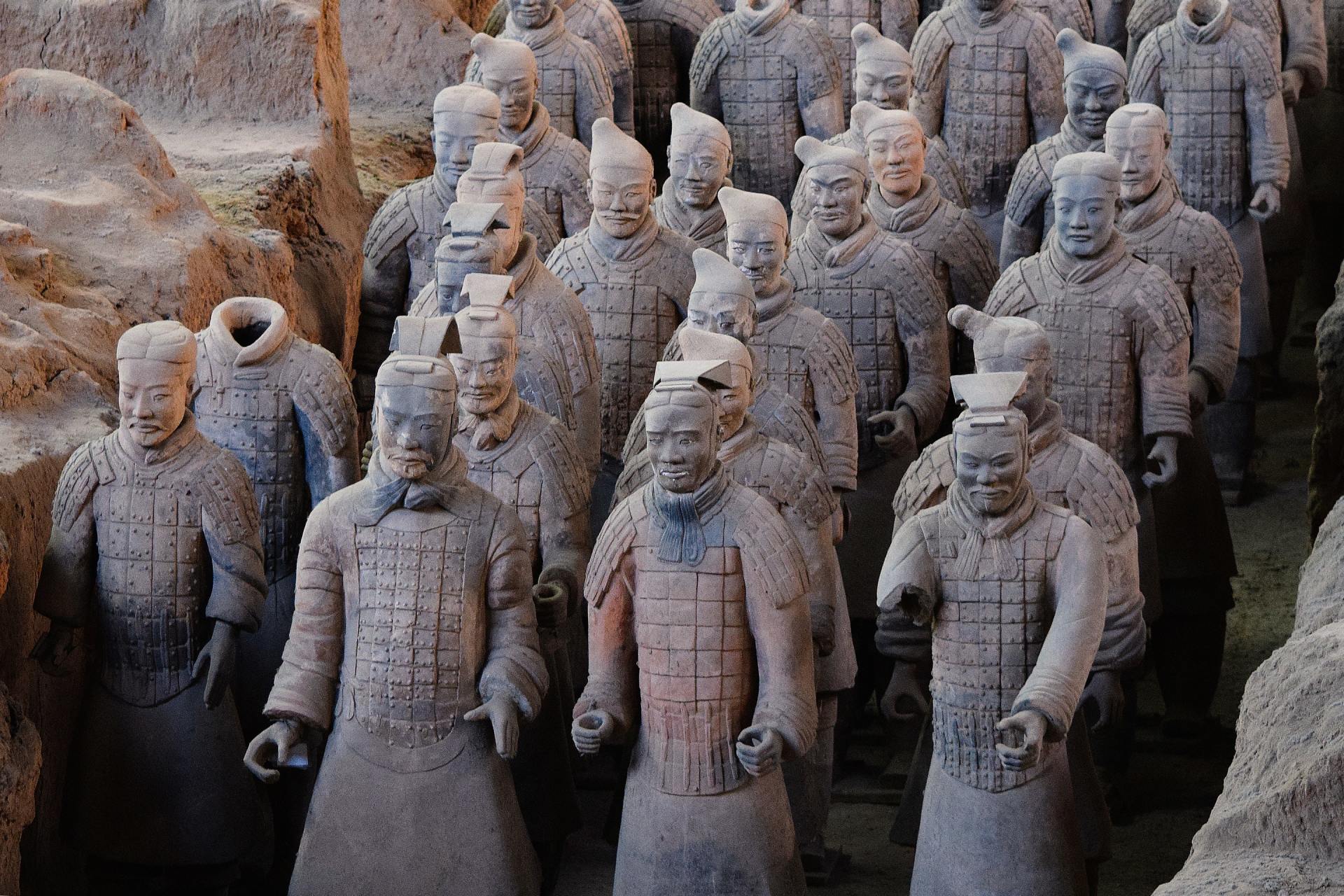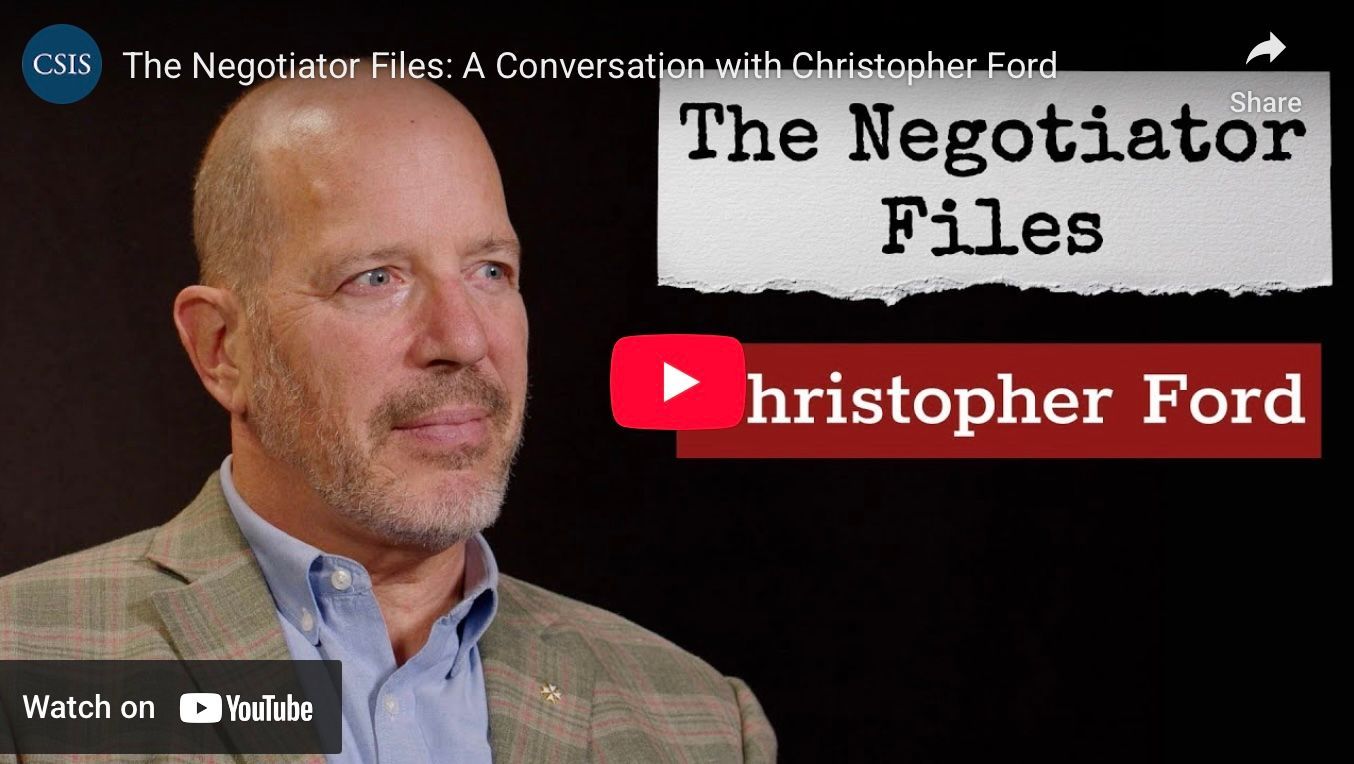Learning from the NPT Regime's Challenges
Dr. Ford delivered the remarks below to a research retreat on February 8, 2023, conducted by the Nonproliferation Policy Education Center (NPEC).
Good evening, and congratulations to the latest crop of NPEC Public Policy Fellows. NPEC has been doing great work for years in using this program to give congressional, executive, and diplomatic staff and journalists invaluable background on nuclear policy issues, and I’m pleased to see that it has produced another fine group.
Henry [Sokolski] asked me to say a few words to you today on what we might learn from the history of violations and withdrawals that has plagued the Nuclear Nonproliferation Treaty (NPT) in recent years. I’m happy to offer my thoughts – with the caveat, of course, that these represent only my own views, and not necessarily those of anyone else – but I’m afraid the message is fairly depressing.
So what I’ll do today is play devil’s advocate, in a sense, by giving you a bit of an issue-spotting tour across some of the problems I see with the nuclear nonproliferation regime right now.
But let me be clear up front. I am in no way an opponent of the NPT regime, though other diplomats have not always appreciated my “tough-love” approach.
I do think that the NPT has been of great value to international peace and security. The Treaty was, for instance, a key factor in ensuring that we have not seen the massive tide of nuclear weapons proliferation that so many observers seem to have expected when surveying the international landscape back in the early 1960s. We don’t live in that massively proliferated world, and the NPT is one of the reasons that we do not.
The Treaty has thus provided huge benefits in helping reduce the risk of nuclear war by keeping the number of weapons possessors to a minimum. It has also been of enormous benefit to every Non-Nuclear Weapon State (NNWS), helping them all be much more secure through what is, in effect, a worldwide exchange of nonproliferation promises pursuant to the NPT’s Article II, so that each NNWS can have confidence that its neighbors and rivals will not acquire nuclear weapons. In a sense, therefore – though in certain disarmament circles you’ll often hear some disingenuous nonsense to the contrary – nobody benefits from the NPT regime more than the world’s nuclear weapons “have nots.”
So let’s make sure that’s clear: the NPT has clearly been of enormous value, and on the whole it has been a success. That said, the NPT regime’s overall story of violations and withdrawals, since end of Cold War and looking ahead to the future, is a not a reassuring one.
I. The Regime’s Challenges
A. Problems of Compliance Enforcement
The last time I spoke to an NPEC Public Policy Fellows event, back in 2017 when I was at the White House, I pointed out that the NPT regime has had terrible trouble responding quickly enough to proliferation challenges to make a difference.
The case of Iran is illustrative. As you may recall, public revelation of Iran’s previously secret work to develop a fissile material production capability for its nuclear weapons program first occurred in August 2002. But it wasn’t until December 2006 that the first United Nations sanctions were imposed against Tehran for its nuclear mischief. The international community was eventually able to muster the collective willpower to start imposing pressures on Iran, but by the late date at which that much pressure became politically possible, the amount of pressure that could be mustered was insufficient. Iran had by then moved to a different stage of its program, and was by that time more committed than that amount of pressure could affect.
At every step, in other words, by the time political will developed to impose more pressure, Iran’s continuing progress with and political and resource investment in its nuclear program had ensured that particular pressure would be inadequate. Even as it did increase pressures on Iran, therefore, the international community was always behind the curve, imposing at every stage too little pressure to make a difference.
Nor did the Joint Comprehensive Plan of Action (JCPOA) nuclear deal do anything to change that trajectory, for all it succeeded in doing was getting Iran to temporarily suspend its nuclear work in return for promises that after a few years’ time no one would ever again pressure Iran to constrain its fissile material production. And though Tehran has now moved more quickly to build its production capacities than it would have done had the JCPOA remained in force and Iran had followed its strictures, Iran has today succeeded in positioning itself exactly where the JCPOA was eventually going to permit it to be anyway.
Whatever the timing, therefore, the real legacy of the JCPOA was always going to be in giving Iran’s nuclear program international legitimacy as that country positioned itself as a sort of “virtual” weapons possessor, able in theory to sprint quickly to nuclear weaponization. So this is hardly a nonproliferation success story.
And then there’s North Korea. The International Atomic Energy Agency (IAEA) helped identify and draw attention to North Korean safeguards violations in the early 1990s. When Pyongyang’s drive toward weaponization created a crisis, however, it was again “resolved” only through a diplomatic stalling game – one which actually rewarded North Korean violations through aid payoffs to suspend its illegal nuclear weapons work, and under agreements on which the Kim regime nonetheless cheated by secretly developing a uranium production pipeline for its weapons program.
When caught in this cheating, Pyongyang withdrew from the NPT in 2003, and has since developed a nuclear arsenal. International sanctions against North Korea finally got serious in 2017, but this was obviously also too late to make much difference. Again, we do not have here a pleasant story of successful compliance enforcement.
B. Problems of Compliance Assessment
Moreover, the international community’s nonproliferation collective action problems have not merely hampered compliance enforcement. They have also impeded countries’ willingness to admit the existence of violations in the first place. As anyone who has had any connection to diplomacy at the IAEA will know, it its always extraordinarily difficult to muster sufficient diplomatic support to find Iran in violation of nuclear safeguards even when copious documentation of multiple such breaches has been complied and published by the IAEA Director General himself. And, apart from the United States, which governments have to this dayever publicly said that Iran violated Article II of the NPT by trying to develop nuclear weapons?
As I painfully recall, in fact, even we in the United States have a record of candor in compliance assessment vis-à-vis Iran that on occasion has been nothing short of shameful. After all, it was way back in 1991 that the U.S. Arms Control and Disarmament Agency (ACDA) first publicly assessed that Iran was seeking to develop nuclear weapons. But the U.S. Government did not actually declare Iran to be in violation of Article II of the NPT until 2005 – some fourteen years later! Even that belated conclusion, moreover, only occurred after a massive intra-bureaucratic fight led by Under Secretary of State John Bolton, Assistant Secretary Paula DeSutter, and myself (at the time the Deputy Assistant Secretary in charge of compiling the State Department’s annual “Compliance Report”). Even the United States, in other words, has sometimes been embarrassingly slow in identifying and calling attention to violations.
C. Asymmetric Impact
Moreover, the enforcement mechanisms of NPT regime have also struggled with the problem of what one might call asymmetric impact. That is, the nonproliferation system is challenged by the fact that its mechanisms for identifying and remedying safeguards problems are ones that are much more effective in dealing with countries that are already (relatively) open to and cooperative with the international community than they are in dealing with bellicose dictatorships. The system, in other words, is least effective in fixing problems when it matters most.
When South Korea was discovered in 2004 to have been engaged in undeclared experiments with fissile material – rather clearly in violation of its safeguards obligations – this disclosure alone was enough to prompt Seoul to conduct an embarrassed retreat. Similarly, the discovery in 2005 that Egypt had also failed to report experiments as required by its safeguards obligations seems to have resulted in their suspension.
In neither of those two cases did the IAEA declare there to have been a violation, but in both cases the illicit work seemed to have been stopped. That’s good, I suppose, but the comparison to Iran and (especially) to North Korea is striking. Like many rules in our complicated world, it would seem, nonproliferation rules work best in constraining relatively good international citizens, whereas the real rogue regimes care very little about them.
That may on one level be unsurprising – rogues, after all, are rogues – but one should perhaps worry a bit about the long-term integrity of a legal regime that seems to provide effective constraint only upon lessproblematic members of the community, while leaving the worst miscreants comparatively free to pursue the dangerous weapons they desire. This is not a problem unique to the NPT regime, of course. (After all, some such dynamics are also in play in other areas – including with gun control rules that constrain law-abiding citizens more than violent criminals, and with campaigns for the Treaty on the Prohibition of Nuclear Weapons [TPNW] that press democratic regimes to disarm themselves in the face of aggressive nuclear-armed autocracies such as Russia, China, and North Korea, whose dictatorial regimes are unaffected by such civil society pressures.) Nor is the existence of this problem an argument for not having any rules at all! But one must admit that asymmetric impact is a problem nonetheless.
D. Corrosively Weaponized NPT Discourse
Another problem with the NPT regime today is the degree to which some countries and portions of the disarmament community have succeeded in weaponizing NPT-related discourse against the Nuclear Weapon States (NWS) in ways that are profoundly corrosive to the future of the NPT regime. Notwithstanding the plain language and negotiating history of the Treaty, it is now a fairly commonplace assertion that Article VI of the Treaty “requires” NWS such as the United States to get rid of their nuclear weapons irrespective of the circumstances, and whether or not there is any serious good faith counterparty available with whom to pursue disarmament negotiations. It is also even suggested that the NWS’ failure to have already gotten rid of all nuclear weapons justifies other states in ignoring the nonproliferation obligations of the NPT’s Article II.
I won’t go into the details of the argument – though I’ve addressed it elsewhere – but this is dangerous hogwash that is undermining the foundations of the NPT regime, and making future nuclear disarmament more unlikely as well. This is all terribly foolish.
As NPEC has recognized for years and I have also tried to address, there has also been a weaponization of discourse under Article IV of the Treaty, such that it is commonly accepted – again, I believe, both wrongly and dangerously – that NNWS have a “right” to acquire all the proliferation-sensitive technologies and capabilities they wish, and thereby to position themselves as “virtual” weapons states just a short sprint away from weaponization “breakout.” I certainly understand the opportunistic and self-aggrandizing politics of such assertions, but it’s hard to overstate how dangerous such claims are for the future of nonproliferation.
E. Problematic Security Environment
Furthermore, all of this is occurring in a structural context that is, on the whole, perhaps less conducive to nonproliferation than at any point since the NPT was drafted. During the Cold War, nonproliferation had some pretty powerful friends. The superpowers, for instance, felt a strong interest in ensuring that as few new members as possible joined the nuclear weapons “club,” and indeed the United States and the Soviet Union worked together closely in drafting the NPT. In addition, Washington and Moscow each enjoyed positions at the head of alliance relationships that gave them considerable leverage in ensuring compliance by “their” partners.
The nonproliferation-facilitating power of those alliances faded dramatically with the end of the Cold War, but so also did the proliferation incentives perceived by the nuclear superpowers’ friends and allies. What was left in the “problem” category was simply a coterie of rogue regimes – North Korea, Iraq, Libya, and Iran – that wanted to weaponize largely against the system of global U.S. predominance created by the collapse of the USSR. Even if the international community wasn’t particularly adept at countering it, proliferation thus became perhaps the single most important international security concern of the immediate post-Cold War world.
Today, however, we may be coming to face the worst of both worlds. To begin with, the largest powers in the system these days don’t all seem to find proliferation nearly as threatening as they did when the NPT was drafted. To some extent, while China and Russia both still surely share at least some interest in there not being more nuclear weapons possessors, those two bellicose geopolitical revisionists – precisely because they are revisionists – also share an agenda with rogue regimes rebelling against the post-Cold War security environment of U.S. predominance.
The resulting ambivalence has ensured that Moscow and Beijing are terrible nonproliferation partners, frequently more pleased by (and willing to encourage) the problems rogue regimes present for the United States than they are distressed by the resulting erosion of the NPT system. China and Russia, in other words, have adopted a lax and semi-permissive attitude toward nuclear weapons proliferation as a means by which to help achieve their broader strategic objective of unraveling the post-Cold War order.
At the same time, Russian and Chinese revisionism is also creating new pressures for others to desire nuclear weapons, particularly neighboring countries friendly to the United States. After all, the siloviki thugs in the Kremlin and the Communist bureaucrats in the Zhongnanhai leadership compound pose ever-greater threats to their neighbors, and to the international system as a whole, from behind screens of reckless nuclear weapons saber-rattling (in Russia’s case) and a massive nuclear weapons build-up (in China’s).
The aggressiveness now being displayed by Moscow and increasingly also by Beijing – along with the still-unsolved problem of North Korea’s growing nuclear arsenal – is creating new incentives for their neighbors to consider engage in nuclear weapons proliferation of their own. And it is doing so at a time in which it is not obvious that U.S. alliance guarantees can continue to reassure allies, as they did so often in the past, that those countries do not need their own nuclear deterrent in the face of such great power threats. It is not merely that great power competition has emerged as a more central focus of security planning than nonproliferation in recent years, but that aspects of that competitive environment actually make proliferation pressures worse.
We may not face a full crisis in this respect quite yet. Recent trends, however, are disturbing, and it’s not hard to imagine a future in which one could not in good conscience continue to preach the virtues of nonproliferation to a small democracy directly threatened by Russian, Chinese, or North Korean aggression and intimidation. (There’s a reason, after all, that the drafters of the NPT put in a withdrawal clause keyed to threats that “jeopardize the supreme interests” of a country. It would be difficult to ask a country to sacrifice itself on the altar of nonproliferation propriety.)
II. But … A Chance to Work Together
All of this, of course, paints a very grim picture. Frankly, I’m not sure I can offer a reassuring answer to these problems, at least not in the short term.
Nonetheless, I still hold out hope that current events can provide the various elements of the U.S. and broader Western nuclear policy community with real substantive reasons to work together – perhaps for the first time. After all, whether you are a pro-deterrence hawk focused on strategic competition, a disarmament advocate, or simply a nonproliferation and nuclear security wonk, surely there is now reason to cooperate at least on the two immediate tasks of: (1) shoring up U.S. conventional military power and alliance networks; and (2) facing down Chinese and Russian challenges to the international system and the sovereignty and autonomy of the states within it.
Doing those two things would serve all three of those policy agendas – deterrence, disarmament, and nonproliferation – all at once. If we cannot do those two things, by contrast, none of those agendas, including nonproliferation, will have much of a future. On this basis, cannot the factions of our policy community reach some kind of a truce amongst themselves and build an effective working relationship against Russian and Chinese revisionism?
More broadly, perhaps we can even also agree to look past our poisonous domestic politics of mutual demonization and recrimination long enough to cooperate on robust security and defense policies vis-à-vis our great power rivals in ways that will at least keep the global security environment from getting worse.
We Americans aren’t traditionally very good at paying sustained attention and applying consistent strategy in dealing with the outside world, but we are pretty good at rallying creatively when confronted with major threats. This might now be a good time for that.
Thanks for listening.
-- Christopher Ford









